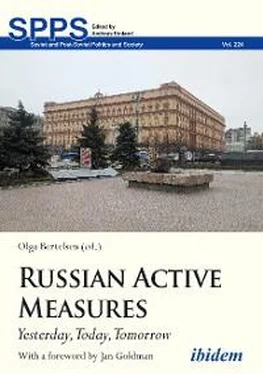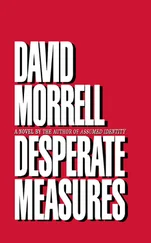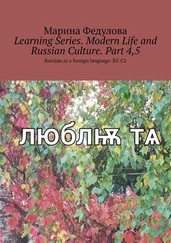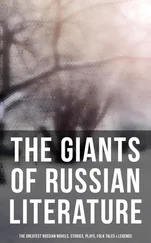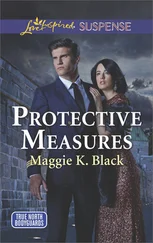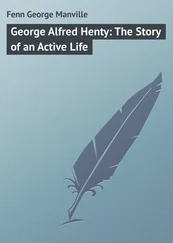4On the transformation of the United States’ image under Stalin and Khrushchev, see Rósa Magnúsdóttir, Enemy Number One: The United States of America in Soviet Ideology and Propaganda, 1945–1959 (New York: Oxford University Press, 2019), esp. 73, 151.
5Haluzevyi Derzhavnyi Arkhiv Sluzhby Bezpeky Ukrainy (hereafter: HDA SBU), f. 16, op. 1, spr. 902, ark. 35, 142. Unless otherwise stated, all excerpts from archival documents have been translated by the author from Russian into English. Compare with the original: “Главную угрозу советской Украине представляют украинские буржуазные националисты, сионисты и сектанты—все на службе и финансовой поддержке разведок США и Англии.”
6HDA SBU, f. 16, op. 1, spr. 919, ark. 60–61.
7Rudolf Pihoia, “Chekhoslovakia 1968 god (Part 1),” Novaia i noveishaia istoriia , no. 6 (1994): 24–28. See also Mark Kramer, ed., “Ukraine and the Soviet-Czechoslovak Crisis of 1968 (Part I): New Evidence from the Diary of Petro Shelest,” Cold War International History Project Bulletin , no. 10 (1998): 234–47; Andrew and Mitrokhin, The Sword and the Shield , 251.
8Vitalii K. Vrublevskii, Vladimir Shcherbitskii: zapiski pomoshchnika: slukhi, legendy, dokumenty (Kyiv: Dovira, 1993), 167–68.
9It is based on my calculations of criminal cases from 1971 (HDA SBU, f. 16, op. 1, spr. 1017) to 1989 (spr. 1271). An analysis of various official KGB reports to Ukraine’s Communist Party leadership has confirmed the preliminary calculations (spr. 1056, ark. 1–311; spr. 1115, ark. 5–310; spr. 1115, ark. 25–301; spr. 1209, ark. 25–290).
10HDA SBU, f. 16, op. 1, spr. 1249, ark. 147–49. On the Soviet youth’s fascination with American jazz and rock music as early as September 1964, see especially the September 1964 KGB report in HDA SBU, f. 1, op. 1, spr. 1567, ark. 151–52.
11See the material about the KGB operations and Prague Spring in Andrew and Mitrokhin, The Sword and the Shield , 247–61.
12The author’s interview with Ihor T., a KGB officer, 15 May 1991, Dnipropetrovsk, Ukraine.
13HDA SBU, f. 16, op. 1, spr. 977, ark. 253–88.
14This survey was submitted to the KGB on 13 September 1968. See “Obzor: Odesskoe studenchestvo. 1968 god” [“The Odessa College Students (1968)”] in HDA SBU, f. 16, op. 1, spr. 977, ark. 255–88.
15HDA SBU, f. 16, op. 1, spr. 977, ark. 258–59.
16HDA SBU, f. 16, op. 1, spr. 977, ark. 275–76.
17HDA SBU, f. 16, op. 1, spr. 977, ark. 275.
18HDA SBU, f. 16, op. 1, spr. 977, ark. 273.
19HDA SBU, f. 16, op. 1, spr. 977, ark. 274.
20HDA SBU, f. 16, op. 1, spr. 977, ark. 275.
21HDA SBU, f. 16, op. 1, spr. 977, ark. 274.
22HDA SBU, f. 16, op. 1, spr. 977, ark. 277–78. For a detailed discussion about Ukrainian speakers’ Russification who moved to the city of Dnipropetrovsk from the Ukrainian countryside, see Zhuk, Rock and Roll , 176–79.
23HDA SBU, f. 16, op. 1, spr. 977, ark. 263, 281.
24HDA SBU, f. 16, op. 1, spr. 977, ark. 280–81.
25HDA SBU, f. 16, op. 1, spr. 977, ark. 281–82. For more details about the cult of The Magnificent Seven among Soviet youth, see Sergei I. Zhuk, Soviet Americana: The Cultural History of Russian and Ukrainian Americanists (London and New York: I. B. Tauris, 2018 [London and New York: Bloomsbury Publishing, 2019]), 138–140.
26HDA SBU, f. 16, op. 1, spr. 977, ark. 281–83.
27 Banderovtsy was derived from the name of Stepan Bandera, a leader of the OUN radical branch. His name became a symbol of the Ukrainian national cause in western Ukraine since the late 1940s. See Serhy Yekelchyk, Ukraine: Birth of a Modern Nation (New York: Oxford University Press, 2007), 125–28, 141–51.
28Derzhavnyi Arkhiv Dnipropetrovskoi Oblasti (hereafter: DADO), f. 19, op. 52, spr. 72, ark. 9.
29See the original text of this letter in Ukrainian in Raisa Lysha, Yurii Vivtash, and Orysia Sokulska, eds., Porohy: Vybrane , vol. 1–9 (Kyiv: Smoloskyp, 2009), 432–38. In August of 1968, this letter was sent to the Head of the Council of Ministers of the UkrSSR V. V. Shcherbytskyi, the Candidate Member of the Politburo of the Central Party Committee F. D. Ovcharenko, and the Secretary of the Writers’ Union D. V. Pavlychko.
30See the English translation of this letter in The Ukrainian Review XVI, no. 3 (1969): 46–52. This text entitled “Letter from the Creative Youth of Dnipropetrovsk” was published without the author’s name. As a result of international publicity of this case, the first scholarly analysis of these events appeared in English in Kenneth C. Farmer, Ukrainian Nationalism in the Post-Stalin Era: Myth, Symbols and Ideology in Soviet Nationalities Policy (The Hague, Boston, London: Martinus Nijhoff Publishers, 1980), 158–59. Compare with Ludmilla Alexeyeva, Soviet Dissent: Contemporary Movements for National, Religious, and Human Rights , trans. Carol Pearce and John Glad (Middletown, CT: Wesleyan University Press, 1985), 40. See also HDA SBU, f. 16, op. 1, spr. 977, ark. 367–71.
31For more details, see Zhuk, Rock and Roll , 48–64.
32As early as 1996, KGB documents on Soviet hippies were quoted in a book by a prominent Soviet dissident. See Bukovsky, Judgment in Moscow, 136.
33HDA SBU, f. 16, op.1, spr. 974, ark. 114–15.
34Ibid. See also Amerika , no. 150, April 1969, pp. 12–18. Amerika was a monthly periodical published in Russian by the U.S. Information Agency, beginning from 1959. KGB analysts discussed a shorter version of Keniston’s article published in Amerika in Russian translation. For a full version, see Kenneth Keniston, “Youth, Change and Violence,” The American Scholar 37, no. 2 (1968): 227–45. The KGB was concerned about the Soviet hippies who, like their American counterparts, might use political violence and create alternative political structures that would disrupt the political status quo. According to Keniston’s interpretation, that is what American hippies tried to accomplish. Those Soviet hippies planned to participate “in the all-Union congress during this summer (1969) either in Riga, or Tallinn.” Even recent graduates of high schools demonstrated a similar behavior in 1969 and 1970. Some of them organized a secret society in the city of Slaviansk (Donetsk oblast), known as “Koka-Kola,” “expressing their protest against the existing political order.” See HDA SBU, f. 16, op. 1, spr. 1009, ark. 167–68. Among numerous studies on hippies as part of American counterculture, the best historical analysis was offered by Peter Braunstein and Michael William Doyle in their “Introduction: Historicizing the American Counterculture of the 1960s and ’70s” to Imagine Nation: The American Counterculture of the 1960s and ’70s , ed. Peter Braunstein and Michael William Doyle (New York: Routledge, 2002), 5–14.
35HDA SBU, f. 16, op.1, spr. 1011, ark. 81–92 (with a hand-written note by a party secretary “Report personally on the measures” on ark. 81). See a copy of the same report in HDA SBU, f. 16, op. 1, spr. 1009, ark. 317–28.
36On those groups, see Zhuk, Rock and Roll , 79–92, 97–105.
37HDA SBU, f. 16, op. 1, spr. 1011, ark. 81.
38HDA SBU, f. 16, op. 1, spr. 1011, ark. 82.
39HDA SBU, f. 16, op. 1, spr. 1011, ark. 85.
40HDA SBU, f. 16, op. 1, spr. 1011, ark. 84. “In April 1970, more than 100 hippies from different cities of the USSR, including Lviv, met in Vilnius, where they had a non-official festival of acoustic music (without electric instruments).”
Читать дальше
